Jeff Rowland preamps compared – Coherence II, Synergy IIi, Concerto and Corus
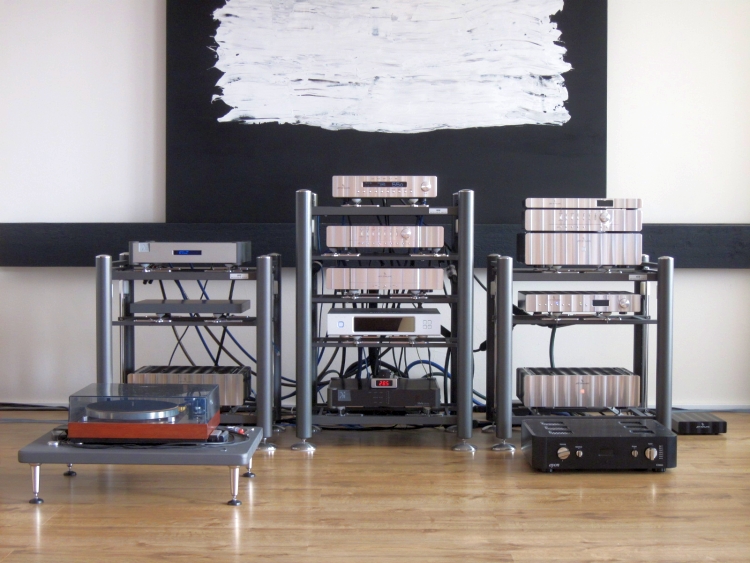
Classic Rowland preamps have a their charm, but the more recent models do provide new insights
Preamps compared directly:
Coherence II series 2
Synergy IIi (with BPS and external power supply upgrade)
Concerto
Corus
Criterion
Introduction
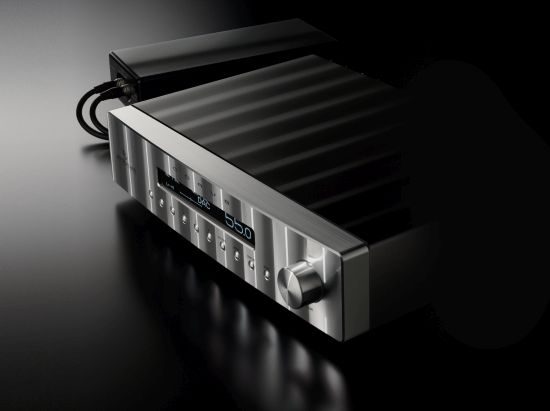
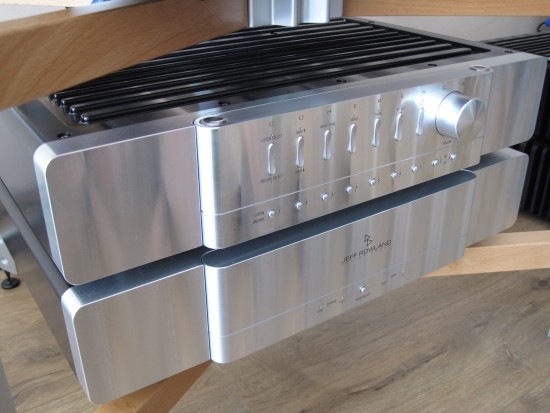
Coherence II and Corus
This is one of those reviews where everything comes together at precisely the right time. Having been a very satisfied Coherence II owner for many years I recently decided that it was time for me to get a more recent Jeff Rowland preamp. I had already reviewed it before but as I later learned, my setup at the time was off balance and did the Corus no justice. I felt that it deserved a second try and for this reason I had a Corus on loan from Alex of A10 Audio in Amsterdam. Read the reprise here.
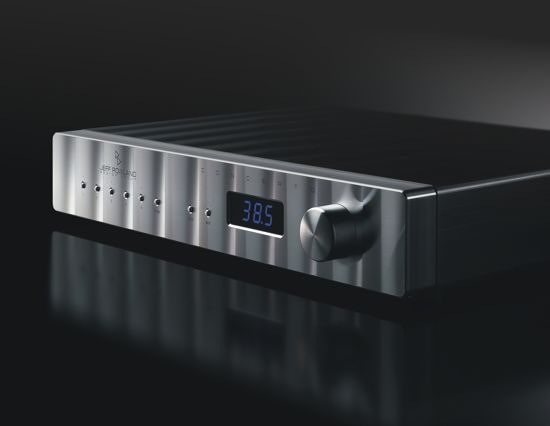
Concerto
The Concerto is a relatively rare preamp, it was not in production for long. When I found it second hand at a very tempting price I purchased it with the idea of it forming the heart of a new to build second audio setup. But when Devialet crossed my path, this idea was abandoned. For this reason the Concerto had been sitting idle for the longest time. I never would have thought that it could challenge the Coherence so I just never tried it in my main setup, until recently. When I finally listened to it, I was pleasantly surprised to find that it performed even better than the Coherence II in certain aspects, which warranted its inclusion in this comparison.
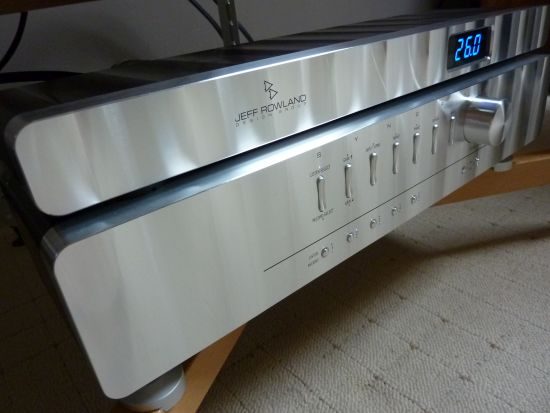
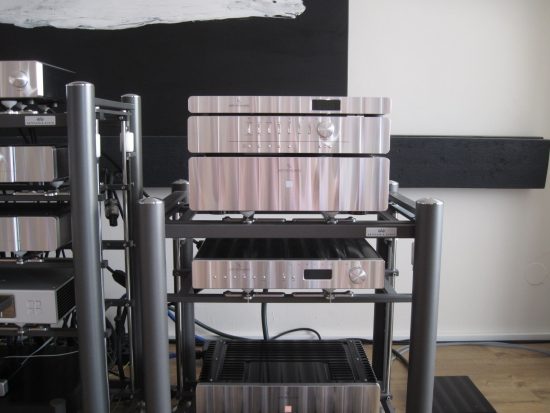
Synergy IIi
Synergy IIi + BPS and external power supply
The Synergy IIi belongs to my friend Jan Willem. I had also owned one many years ago but found it ultimately too smooth and lacking the midbass power and drive that I craved. The reason why the Synergy came around again was because Jan Willem had obtained a relatively rare BPS + external switching power supply. Based on the BPS-2, this BPS looks identical but has a different battery configuration inside. Unlike the BPS-2, it does not draw its power from the amp, so there is a separate very powerful switching power supply. Oddly the Synergy’s auxiliary DC output is now used as an input for the BPS power while the Synergy’s power supply remains connected so that the display and IR control still function. Naturally the Synergy’s own power supply’s IEC inlet is then no longer used. Interestingly, the BPS did not make the Synergy sound even smoother, but rather the opposite: it made it much more dynamic, with much more powerful bass and a more concincingly realistic timbre. Jan Willem brought the preamp along because he wondered how it would compare to the Coherence II and the new Corus.
I won’t dive into each preamp’s aspects too deeply here because they are all covered extensively elsewhere on this site already. Instead, I will focus on the deviating or most interesting comparative aspects.
Sound Comparisons
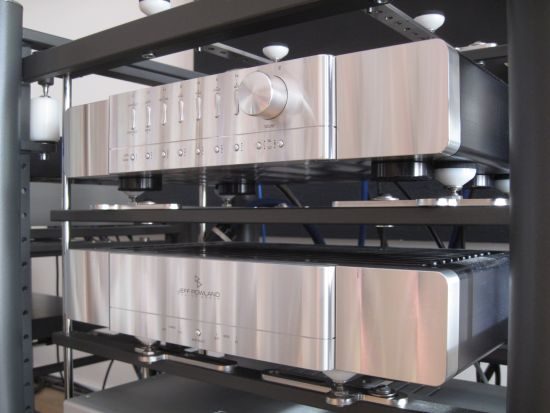
Coherence II series 2
It is important to note that this comparison also took place while the Coherence’s batteries had been in place for longer than recommended and needed to be renewed, and as a result as I later learned after they were replaced, it sounded slower and less dynamic than it can do when on spec.
The Coherence has been my reference for many years and during this time I have always much enjoyed its combination of transparency, timbral fulness and smooth fluidity. The bonus is in its bass, which is unusually full and rich. The Coherence is an easy preamp to live with because it tends to make most music played through it enjoyable and it is especially emotionally very appealing with its very natural timbre, while still sounding very revealing.
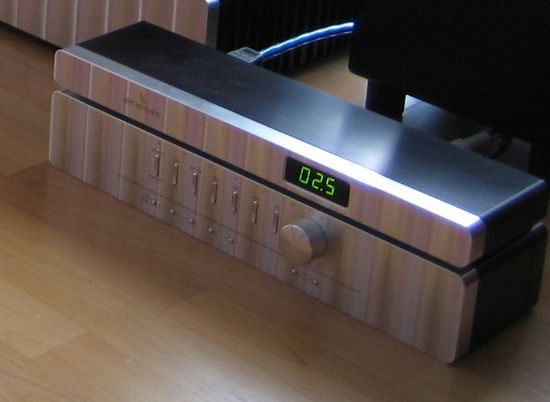
Synergy 2i
The Synergy 2i is a later amplifier and it is indeed slightly more refined and airy than the Coherence, but it does not have nearly as much body and substance. It is also smooth to the point of being lazy. The interesting thing about the Synergy IIi is that even though it sounds velvety rich and smooth, it is also incredibly finely resolving. In my systems the Synergy was always a little too much, with an overly smooth and slow sound as a result. The Synergy 1 however deviates from this, but has its own comparative flaws.
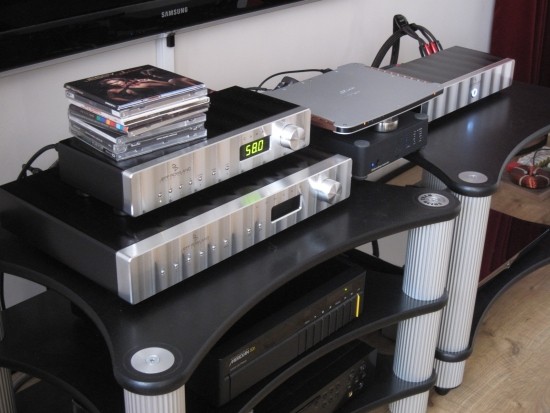
Concerto
The Concerto had already been sitting idle for the best part of a year, only let out occasionally to play in comparisons in the other setup, as shown above, until I started listening to it in my main setup. At this time it really surprised me with its excellent sound. Would you believe that it even surpasses the Synergy IIi and Coherence II in some aspects? The Concerto combines some of the treble air, resolution and creaminess of the Synergy IIi with the bass power, fulness and dynamic expression of the Coherence II, and has no trace of the Synergy’s soft woolyness or restraint. The Concerto also has very lifelike timbre and dynamics, in these areas even better then either the Synergy 2i or Coherence II. For a few months, the Concerto played perfectly in my setup and I wondered if I ever needed to return to the Coherence.
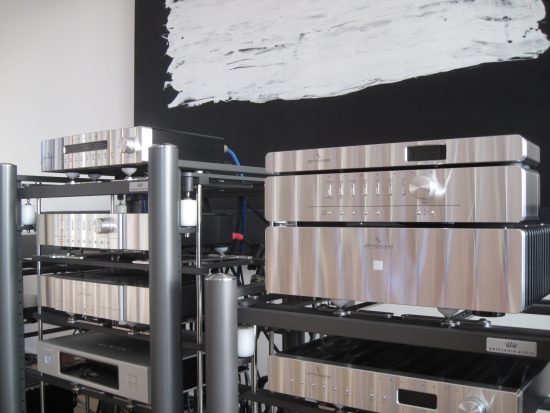
Synergy 2i with BPS and external power supply
Having extensive experience with the Coherence preamp and model 6 power amps, and their Battery Power Supplies, I thought I had the BPS effect figured out entirely. Imagine my surprise when it turned out that the Synergy had transformed into a much more energetic performer!
Rather than sounding even smoother or thicker, it had much more solid and powerful bass and its dips in the upper bass and lower midrange filled in completely. Dynamics were now very impressive as was its newfound transparency. Its timbre was now also much more natural and closer to that of the Coherence II. Speaking of the Coherence, it still had bigger, beefier bass, and an overall fuller tonality, but it now had to bow to the Synergy in terms of dynamics and overall liveliness, in addition to its already better transparency and resolution.
Coherence II series 2 with old / new batteries and combined with the Synergy’s BPS power supply
Now that we had all the puzzle pieces available we started thinking: if the Synergy can be so obviously transformed this way, then its standard power supply may have been insufficient in the first place. And what would happen to the Coherence if we used this switched + BPS power supply with it rather than its own linear + BPS supply? The units are compatible so this was easily tested.
Yup: again we heard a much more open sound across the entire frequency spectrum as well as tighter, more articulate bass, a more detailed and more communicative midrange and a more open treble. The bass was less voluptuous though, and for better or for worse, did not carry the weight that it did with its own linear power supply. After having heard this performance, we stepped back to the Concerto once again and this time around we could not help being underwhelmed.
As part of this group, the Concerto was revealed as sounding comparatively a bit flat and gray, as well as being bested by the Synergy’s resolution and refinement. Even if its timbre is much more lifelike and its bass so much more solid, there’s a free-flowing naturalness about the Synergy IIi that the Concerto simply lacks. It is just a more sober sounding preamp, which is no criticism in itself because it is absolutely not dry and still possesses the typical classic Rowland sound. I would say that the Concerto exhibits precisely the kind of sound that you would expect from a component smack in the middle of a transition between the classic and current JRDG sound signature.
The whole power supply thing however got me thinking: obviously the Coherence is an excellent preamp, but when was the last time that I replaced the Coherence batteries? Way too long ago! I now had a strong suspicion that the Coherence wasn’t performing its best. Even though it was always used in AC mode with the batteries just standing by, I was now sure that they still influenced the sound. The batteries were replaced and when the preamp was listened to again my suspicions were confirmed: the Coherence still sounded lush and richly colourful as always but much more energetic and upbeat. So, it is really important to change the batteries at least every 5 years.
What I think is most important to take away from all this, apart from the differences in character, is the evident importance of a component’s power supply. It really forms the heart of the music signal.
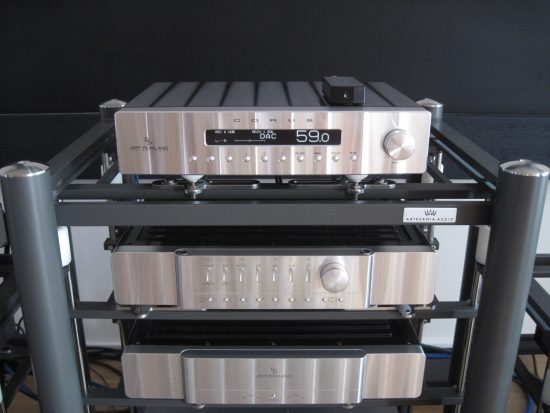
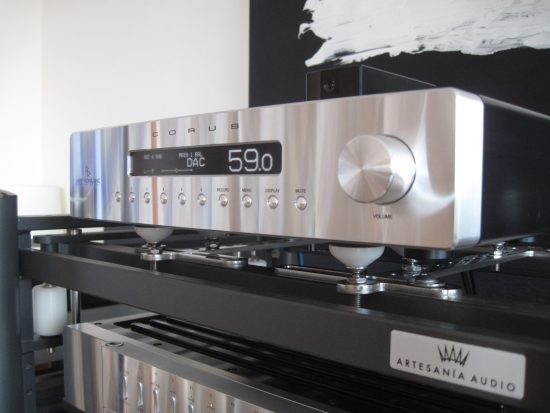
Corus
The Corus is extremely finely detailed and articulate across the board. Interestingly, its treble is superbly refined, but also airy and fluid – no dryness there! Bass is superbly well-defined and articulate, and there is an overwhelming feeling of utter coherence and openness across the entire frequency band. Because the Corus is so very neutral and has such sublime control across the board, some recordings can sound a little clean or lacking colour and the preamp also has a tendency to be very revealing of the quality of the other components that make up the system. For me this was the second time around with the Corus and while I had gotten used to its cleaner, more modern presentation and actually had fallen in love with it, my guests at this time were having mixed feelings. Even though they admired the Corus’ incredible resolving power, transparency and finesse, and like me, were impressed with its nible and articulate bass performance, with some music they were more emotionally moved when listening to the Coherence or Synergy.
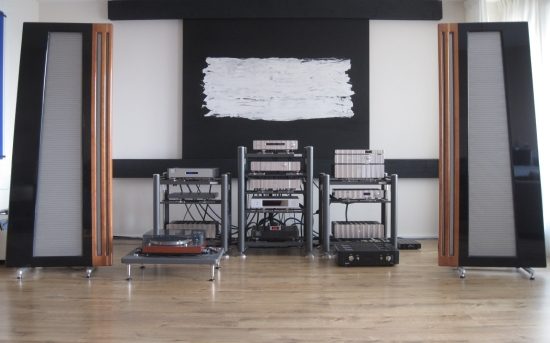
In Summary
Ultimately it was felt by majority of the group that the Coherence II and the Synergy IIi, both with the BPS + external switching power supply, sounded best. While I shared some of this sentiment, I felt that none of the other amps could match the enormously impressive levels of transparency and resolution of the Corus, and its superb bass sealed the deal for me. I have been on a quest for more neutrality for some time now and for me, the Corus was the winner, even if it marked the start of a different sound signature for the Jeff Rowland brand.
Postscript
The outcome of this very interesting comparison, plus the fact that I could not afford a new Corus, brought me to buy a second hand Jeff Rowland Criterion preamp, which is basically a Corus + Battery power supply. This preamp arrived later and was not included in the comparison described above.
The Criterion most definitely delivered on its promise by sounding much like a mix between the best aspects of the Corus and the Coherence/Synergy. When over for another listening session, the very same group of guests were now smitten with the sound, as was I. There was no doubt in anyone’s mind that any of the other preamps could match the Criterion’s combined qualities.
As these things go (agum, with me at least), eventually I still caved in, got a loan and spent it on a brand new Corus + PSU. All this is detailed in separate reviews on this site, so I won’t repeat myself here. Suffice to say that the Corus + PSU do everything the Criterion does, and then some. The Criterion’s sound is also described extensively in the Corus + PSU review.
More Jeff Rowland
Jeff Rowland Company Special Main Page
Jeff Rowland Company Special Preamplifiers
Synergy IIi + Coherence II Extensive Review
Corus Extensive Review
Corus + PSU Extensive Review
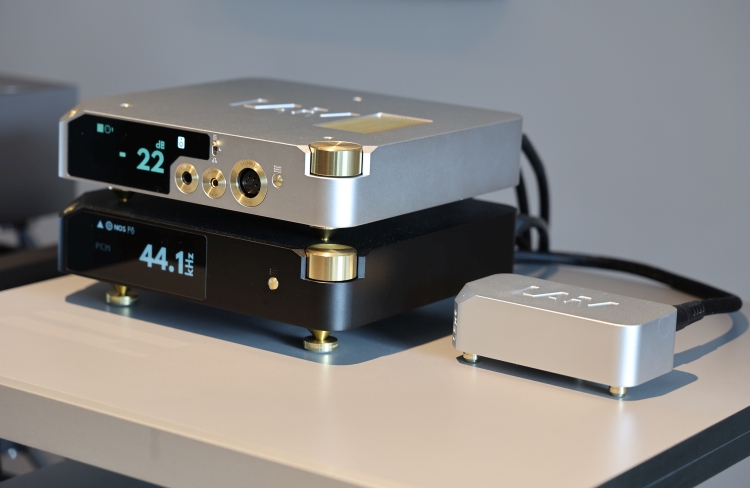
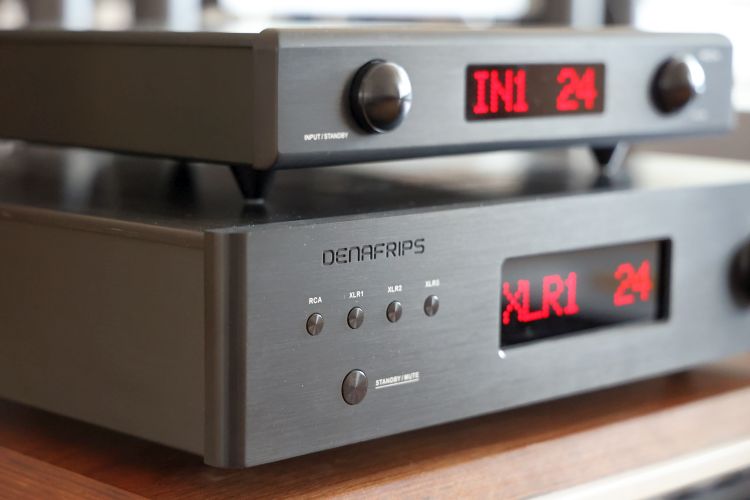
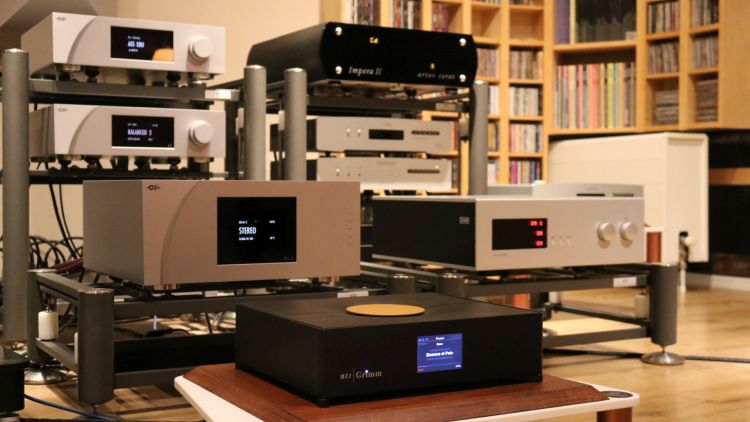
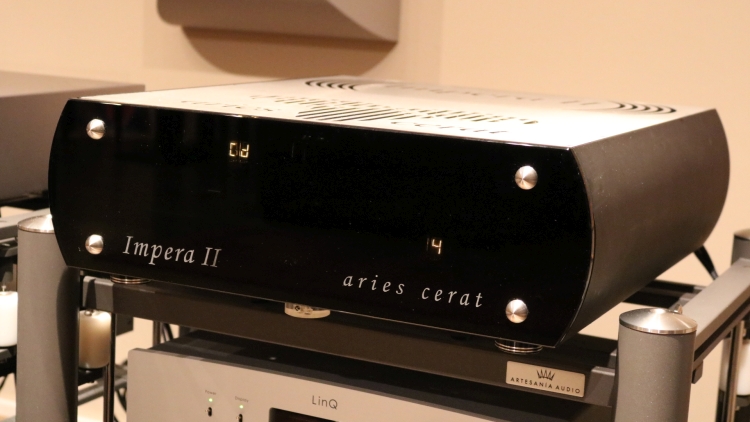
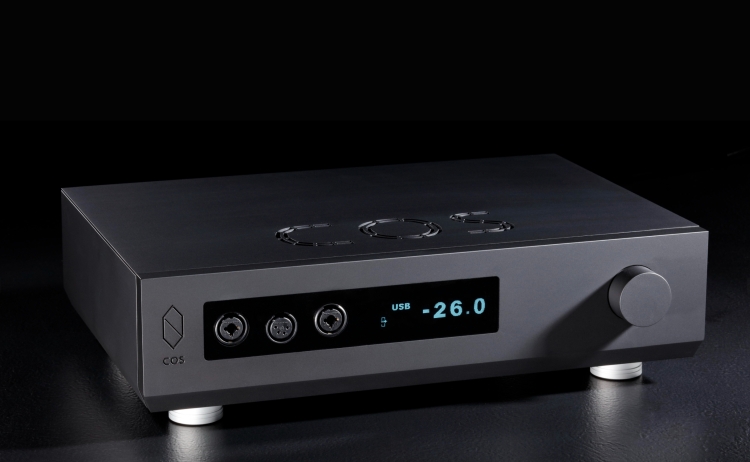
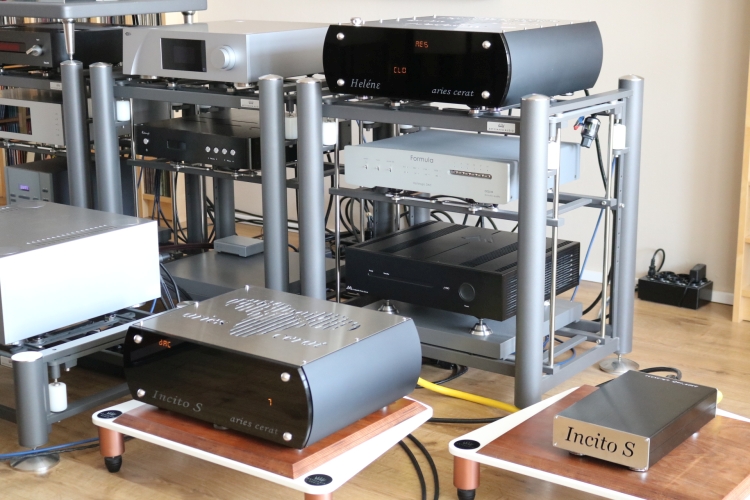
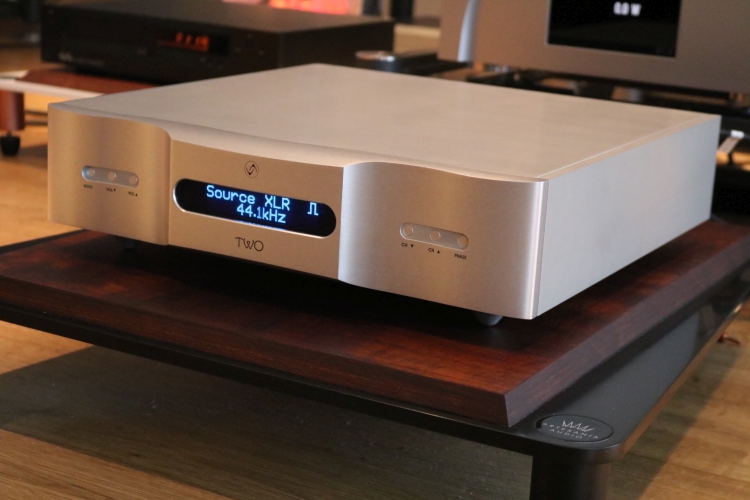
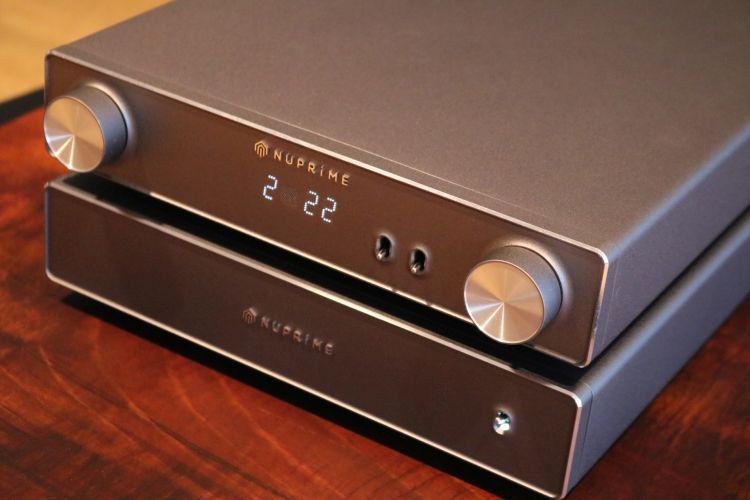
Hi,
i have been reading your articles about Jeff rowland with great interest for some time. I would be interested in buying a Synergy IIi preamplifier. I have heard this preamplifier and find it very beautiful. But I have the impression that it sounds a bit slow. In their articles I read about the different possibilities with the power supplies. Which combination is the best? They had mentioned a combination of the battery power supply and switching power supply. Could you explain this to me in more detail and the influence on the quality of the sound. Does this also change the speed of the sound?
Best regards
Odysseas
Hi Odysseas, I agree, the Synergy IIi is indeed a little slow and rounded. BPS will not fix this unless you use a big switched PS to power the BPS and in turn the Synergy. You need to leave the charger attached because otherwise the sound will feel slow again. Batteries have that tendency. But then, it will rival the Coherence II in terms of dynamics and impact and will beat it in terms of nuance and refinement.
Hi Christiaan, thank you very much for your detailed answer. If I have understood it correctly, three devices have to be connected. The original PSU, the battery PSU and the switching power supply? Which switching power supply is this? I am not sure how these devices are connected. JR does not give any information about this (manuals). Are there any photos of this constellation? I will soon test the Synergy iii against a Concerto and I will report back to you.
Indeed, the three are linked together using Rowland DC cables. The switching power supply is Rowland-branded. In the case of the regular Synergy’s Power Supply, its output socket is now actually used as an input. In this combination, the regular power supply is not connected to the mains power. Sounds strange, I know, but that’s how it works.
Hello Christiaan, very interesting comparison indeed!
But this was done on the older Rowland monoblocs.
I use the newer Rowland 725 monos, which you also reviewed and have a different character then the Rowlands monos you used in the comparison.
Which of the tested Rowland pres would you consider the best match to these 725 blocs?
Thank you, Dominique
Hi Dominique, this comparison was done in a period when I was still very much in favor of a slightly sweet sound with an emphasis on fluidity and flow, treble air, and overall refinement. I wasn’t ready for the crispier, cleaner, more transparent future. Now, I am. With my current mindset, I no longer feel that the 725’s are a little dry or a little too controlled. Now, I feel that they are the perfect successors, still with a recognizable Rowland sound, still friendly, but with improved transparency and control.
I feel more or less the same about the preamps. While the Corus by itself is extremely neutral and linear and it can indeed sound a little too controlled if you are used to the Synergy or Coherence, adding the PSU solves that issue while further increasing the low-level detail.
Depending on your expectations, I would proclaim either the Corus+PSU or the Criterion as the best Rowland preamps. The former is more precise (and is strictly speaking the best Rowland preamp) while the latter has closer ties with the classic Rowland sound. With my current preferences (CH Precision DAC+Amp with Magico S1 mkII), I would no longer be happy with any of the classic Rowland components. Which I guess is only fair given the large discrepancy in price.
Hello Christiaan, thanks for the extensive reply!
Coming from a long Mcintosh period and missing some aspects of that sound, I would say I favour the listening as you did before, looking for that combination of sweeter sound with liquidity yet still transparent. So I think Criterion would be my safest bet between Corus and Criterion. Finding one is another matter… I was able to locate a Concerto pre and Coherence 2 pre though…any recommendations here?
Thanks, Dominique
Hi Dominique, in that case, I would indeed recommend the Criterion as the perfect mix of transparency, refinement, and smoothness, but it’s admittedly hard to find. I like the Concerto a lot. It has a muscular solidity and slam that none of the other Rowland preamps have. (perhaps due to its relatively larger linear power supply?). It’s neither too smooth nor overly clean and less romantic than the other preamps but it might still be a good option for you. But given your hang to the classic Rowland sound, the Coherence II should also be high on your list. Do make sure to replace the batteries if they are old and then again after a certain amount of time. I forget but have noted in one of my reviews when this is needed. The batteries cost very little and are not hard to install.
Thank you Christiaan for the recommendations! Interesting to know that in lack of a Criterion both Coherence 2 and Concerto preamps could be a good match.
I will try to test them in my system!
Best regards, Dominique
Sure thing. But do note that the Coherence II is like a Synergy 2i on steroids while the Concerto has a more modern sound. Neither are as transparent or as refined as the Corus and Criterion. Best of luck finding what you are looking for:-)
Hello Christiaan. I enjoy your reviews very much, and I sincerely respect your opinion, especially, in this case, as it concerns Jeff Rowland gear. I previously owned a Capri and liked it a lot but soon continued on my quest for more. I have a chance to purchase a Concerto Preamp, and though long in the tooth, the idea of a similar sonic portrayal combined with a linear power supply are intriguing- I really like what Rowland does and how they feel – despite this items age, do you think the Concerto would perform equal to or possibly superior to the original Capri? Thank you in advance for your opinion. Cheers!
Hi Lawrence, based on my comparisons, I personally feel that the Concerto stacks up very well against the Capri. It’s a matter of personal perspective as they sound different (Concerto fuller, more spacious, and more sonorous; Capri tighter, cleaner, and more lithe) but at the time, I preferred the Concerto. See also my other review(s) in which I describe the sonic differences. I think you will find some details in the Capri review.
Hello
Je suis français à PARIS et possède 2 Synergy 2i
Pour upgrader la qualité audio de cet appareil, il suffit d’ajouter en parallèle avec chacune des 2 diodes existantes sur l’alimentation (symétrique +12V et -12V) d’autres diodes choisies pour leurs caractéristiques.
Cet upgrade très facile est une considérable amélioration.
Il est techniquement logique car le courant d’alimentation passe par les 2 diodes d’origine sont trop petites.
Et cet upgrade est facile et ne coûte presque rien, seulement quelques euros ou dollars,pour acheter sur internet.
Le résultat est incroyablement bon, sur tout le spectre audio, la richesse harmonique, la scène et la présence musicale.
Si vous désirez savoir quelles diodes conviennent, posez moi la question sur ce blog.